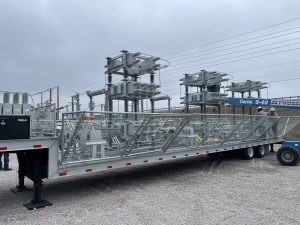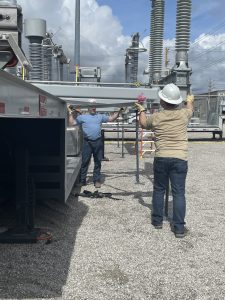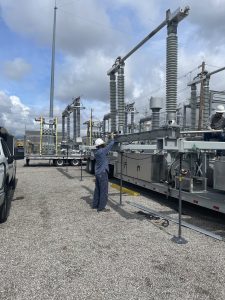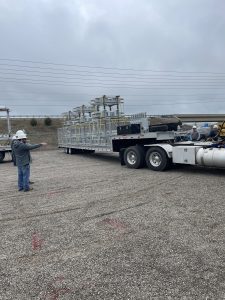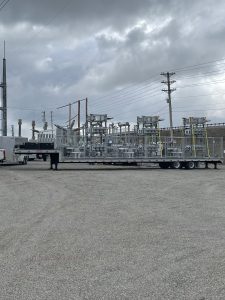 Igniting innovation is a strategic priority at TVA, and while bringing new technologies to life is never easy, it is an important way we continue to serve the people of the Valley region and meet the needs of our customers.
Igniting innovation is a strategic priority at TVA, and while bringing new technologies to life is never easy, it is an important way we continue to serve the people of the Valley region and meet the needs of our customers.
It was a specific need that led the Bulk Planning team to identify a way to improve service to customers through the use of mobile capacitors.
“We typically do a lot of the firsts in the industry,” said Sr. Project Manager Denny Brown in the Transmission Project Services group. “TVA is known for our innovation and forging new paths in the energy industry, and we are proud of the work the team has done to add mobile capacitors to the list of ways we answer customer needs through innovative solutions.”
Bikes, balance and transmission
You’ve probably heard, “it’s as easy as riding a bike.” But when you break it down, riding a bike is anything but easy. You have to apply the right balance to the handlebars to head in the right direction, use your hands and feet to adjust speed, and the key to keeping a bike upright is continuing forward movement.
Just like you need balance to stay upright on a bike, mobile capacitors bring stability to our grid. When transmission lines are loaded, the voltage drops. The mobile capacitor bank provides flexibility to help TVA stabilize the voltage in sensitive areas.
A variety of benefits
In addition to being a way to ensure TVA keeps our voltage level where we want and ensures grid stability, there are other benefits of using mobile capacitors.
First, this technology aids TVA’s economic development initiatives, allowing flexibility in meeting aggressive schedule needs early. As TVA works to attract new customers and promote sustainable growth in the Valley region, often those customers need additional voltage capacity online before TVA can fully build the required infrastructure to support the growth. Mobile capacitors answer that call and can help the new customer jump start their work in the region.
Mobile capacitors are also a cost-efficient tool for TVA. As the name suggests, they are mobile (literally housed on a trailer that can be easily moved), therefore they can be relocated to where additional capacity is needed. Once TVA has completed a permanent substation, the mobile capacitor can be easily moved to the next site in need.
“This technology provides flexibility to our system,” said Principal Project Manager Scott Scharf in the Transmission Project Services group. “It may take us three years or longer to build a substation for an industrial customer, but the use of mobile capacitors allow us to be waiting when they are ready to connect. We can quickly and effectively meet customers’ needs using this technology, and I expect we will continue to add more mobile technology to accompany our mobile capacitors to provide even more efficiency and flexibility.”
The most important piece of the project
As with any project at TVA, the project’s success was thanks to the diligent, hard work of the team. Everyone assigned to the project had to balance their day-to-day responsibilities on top of planning, implementing, problem-solving and preparing for energization of our first mobile capacitor at the Transpark, KY 161kV substation to support new load growth for the Loving, Ky. Project in Bowling Green, Kentucky.
“I have always believed TVA employs the best and brightest minds in the country, if not the world,” said Denny. “When we are faced with challenges, it is our people who rise to the top and find innovative and outside the box solutions. The dedication of TVA employees to meet the needs of our customers and drive innovation in the industry continues to impress me. Our people make me excited about the future.”
“It may sound cliché, but teamwork made this possible,” said Scott. “We had a group of people that faced every challenge presented by this project head on, and they found innovative, cost-effective and safe solutions to each one. It was a true illustration of collaboration by a variety of teams at TVA, as well as external partners.”
Check out photos from the project below:

